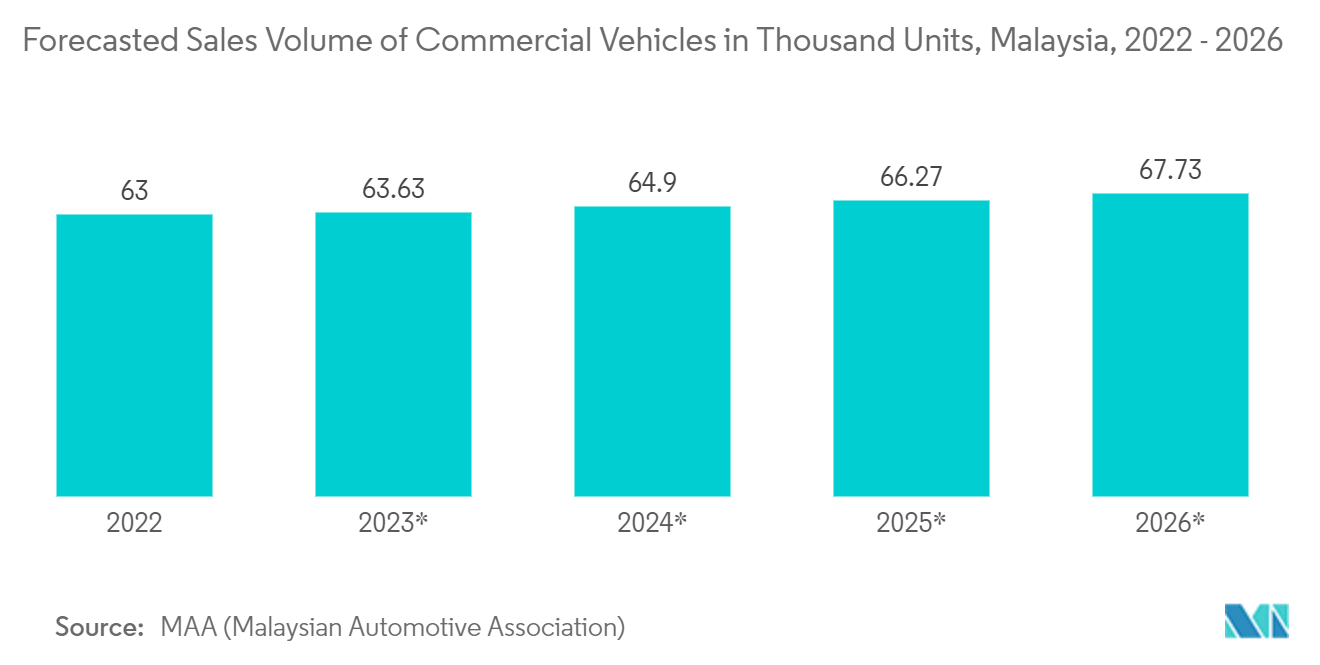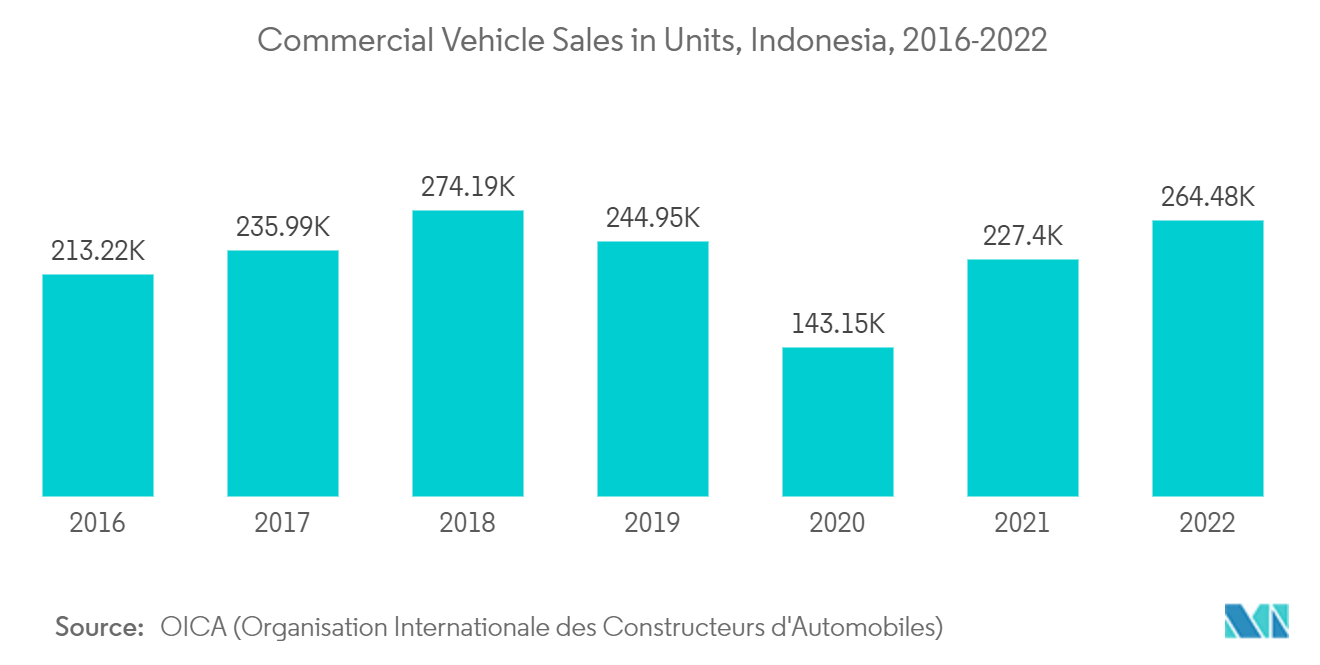Market Trends of Southeast Asia Telematics Industry
LCVs Expected to Register Significant Growth
- Light commercial trucks are among the most preferred vehicles for the transportation and distribution of goods over short distances and within preferred geographical areas. Qualifying light commercial vehicles include vans, pickup trucks, mini-trucks, and three-wheelers.
- Being an essential part of providing logistics solutions to various industries, LCVs offer several features, including low operational costs. Due to the presence of embedded fuel-efficient engines, they operate at a low cost, are smaller and more agile than trucks, and can move merchandise quickly, particularly in cities. Also, these vehicles are suitable for multiple trips within a day.
- As the Southeast Asian region has been witnessing rapid industrialization, moving away from agriculture and toward the manufacturing of electrical machinery and electronic components. This is resulting in higher prices and exports, and the demand for light commercial trucks is anticipated to grow in the near and long term. For instance, according to Statistics Malaysia, in 2022, the manufacturing industry generated about 23.4% of the country's GDP.
- According to the Malaysian Automotive Association (MAA), the commercial vehicle industry is expected to witness stable growth in the country, with sales volume predicted to be 67.7 thousand units during the forecast period, compared to 63.0 thousand units last year.
- The region is witnessing stable growth in the e-commerce industry as LCVs are widely used in distribution centers and warehouses to transport goods quickly from one place to another, such trends are anticipated to influence the market's growth. For instance, according to International Trade Administration (ITA), as of February 2022, the Central Bank of Indonesia recorded a growth of 12% in transaction value, reaching over USD 2 billion. The country witnessed significant growth in e-commerce users after the pandemic. This evolution of the Southeast Asian e-commerce and retail environment is driving large logistics developers to expand their presence in developing markets, driving the demand for LCVs in the region.

Indonesia to Hold Significant Share
- Indonesia is the largest and among the most populous countries in Southeast Asia. The country is developing fast in infrastructure and industrial sector development and holds strong growth potential for the market studied.
- The demand for commercial vehicles, especially for medium and heavy trucks, is growing significantly in the country as industries such as mining, food and beverage, petroleum, manufacturing, etc., are witnessing stable growth. For instance, mining is among the major industries in Indonesia as the industry contributes more than 10% to the country's GDP, with the Indonesian government planning to increase the sector's economic contribution to 12% of the country's GDP by 2024.
- Due to the growth of the major end-user industries, commercial vehicle sales have been witnessing strong growth in the country. Although the pandemic has restrained the growth of commercial vehicles in the country, removing pandemic-related restrictions positively impacted the growth of the market studied. For instance, according to OICA, commercial vehicle sales in Indonesia declined from 2,74,194 units in 2018 to 1,43,152 units in 2020, which increased further to reach 2,64,477 units in 2022.
- Furthermore, according to the Changing Transport Organization, the high volume of imported and exported goods places a high demand on logistics services in Indonesia, 90% of which is dominated by trucking. As freight transportation is a significant contributor to greenhouse gas (GHG), the Indonesian government has been taking several initiatives to reduce emissions from these vehicles. For instance, the government's Mitigation Action Plan encourages truck owners to modernize their fleets, replacing the least efficient vehicles with new trucks carrying emission control and the latest generation of engine efficiency technologies.
- Hence, such trends are anticipated to create opportunities in the market studied as telematics data can detect vehicle emission levels, giving the fleet owners real-time information to act upon.


